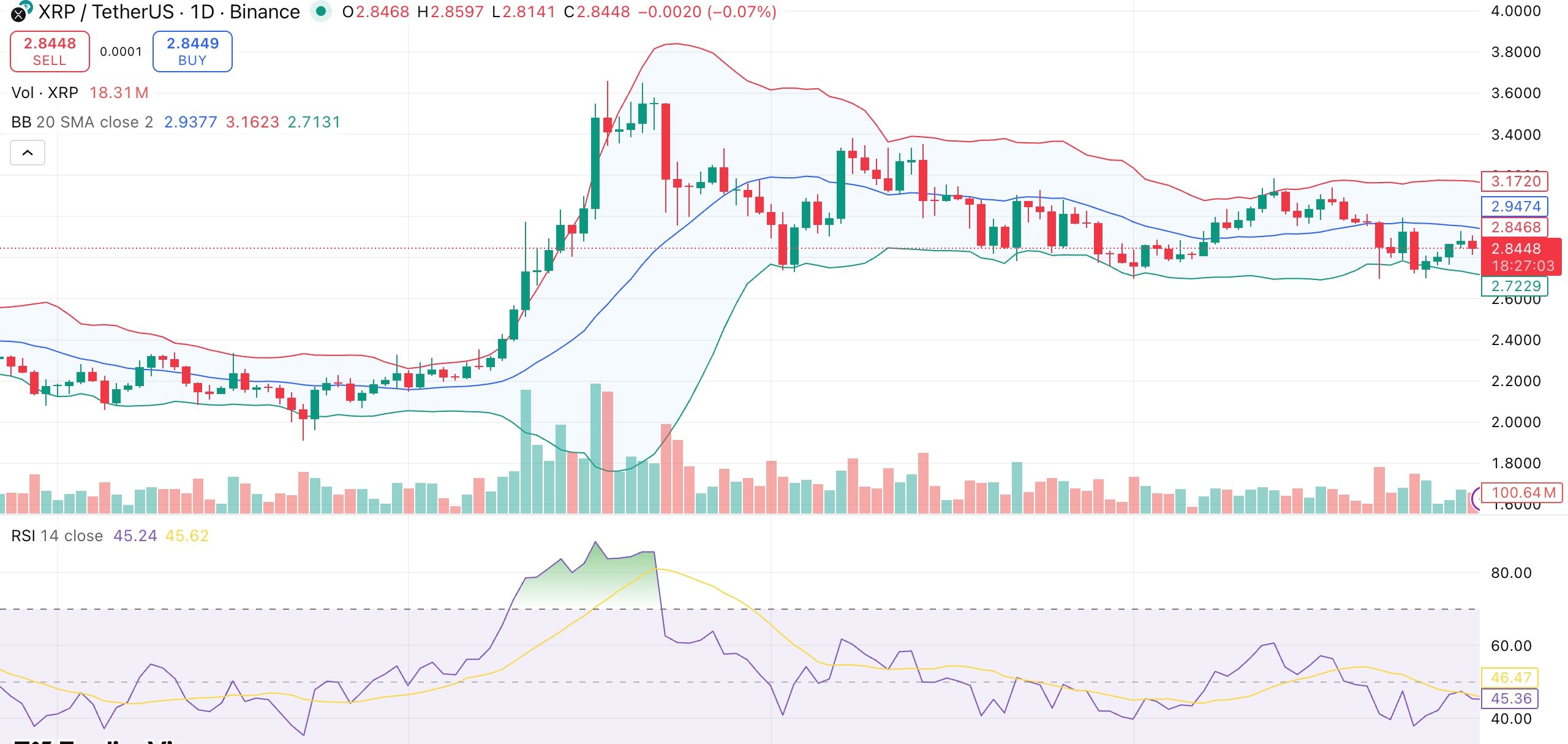XRP price holds steady as Ripple CTO announces exit after 13 years
XRP price held steady at $2.85 as Ripple chief technology officer David Schwartz announced plans to step down after 13 years, with traders weighing leadership changes against broader market signals.
- XRP trades at $2.85, down 1.5% but stable within range.
- Ripple CTO David Schwartz to exit role in Dec. 2025, joins board.
- Technicals show consolidation, with key levels at $2.71 and $2.98.
XRP was trading at $2.85 at the time of writing, down 1.5% from the day before but still within its seven-day range of $2.71 to $2.98. Despite the brief decline, the token has risen 1.2% in the last week and 4% in the last month, showing resilience during a time when sentiment in the Ripple ecosystem is changing.
Market activity suggests steady participation. XRP’s (XRP) 24-hour trading volume stood at nearly $4.9 billion, up 0.5% from the previous day, even as derivatives metrics showed some cooling. Coinglass data showed a 3.9% drop in futures volume to $5.21 billion and a 1.57% slide in open interest to $7.42 billion.
That decline suggests traders are reducing leveraged bets, leaving the spot market to set the tone. For now, that tone appears steady.
Schwartz steps back as community weighs leadership change
Ripple’s longtime Chief Technology Officer David Schwartz, better known to the XRP community as JoelKatz, announced on September 30 that he will step down from his position at the end of 2025. In a long message on X, Schwartz described his 13 years at the company as one of the greatest honors of his life, second only to his family.
Schwartz explained that while he is stepping back from day-to-day responsibilities, he will remain close to the community. He plans to continue running his own XRPL node, experimenting with new use cases for XRP, and engaging with developers.
Ripple confirmed that he will transition into the role of CTO Emeritus and join the company’s board of directors. CEO Brad Garlinghouse praised Schwartz as both a technical visionary and a cornerstone of Ripple’s culture, joking that his new board seat made him “the boss now.”
While some traders speculated on the timing, noting that the news arrived just as SWIFT confirmed it is exploring its own blockchain-based solutions, most community responses remained optimistic.
XRP price technical analysis
XRP is trading in a consolidation phase. Momentum indicators are mainly neutral, with the stochastic oscillator close to mid-levels and the relative strength index at 45. There isn’t a distinct trend, as shown by the commodity channel index and ultimate oscillator both remaining in neutral territory.

Moving averages paint a slightly bearish near-term picture, with most shorter-term EMAs and SMAs signaling sell. The 100-day and 200-day averages, however, continue to point to underlying strength and longer-term support for the token. A decrease in volatility, which often precedes a breakout, is indicated by the Bollinger Bands’ narrowing.
If bulls regain momentum, a close above the $2.98 resistance level could open the way toward $3.17, with further room to run if broader market sentiment turns risk-on. On the other hand, failure to hold above the $2.71 support level would weaken the setup and expose XRP to a potential retreat toward the $2.60 range.
You May Also Like

BNB Chain Integrates Chainlink to Bring US Government Economic Data Onchain

CEO Sandeep Nailwal Shared Highlights About RWA on Polygon
